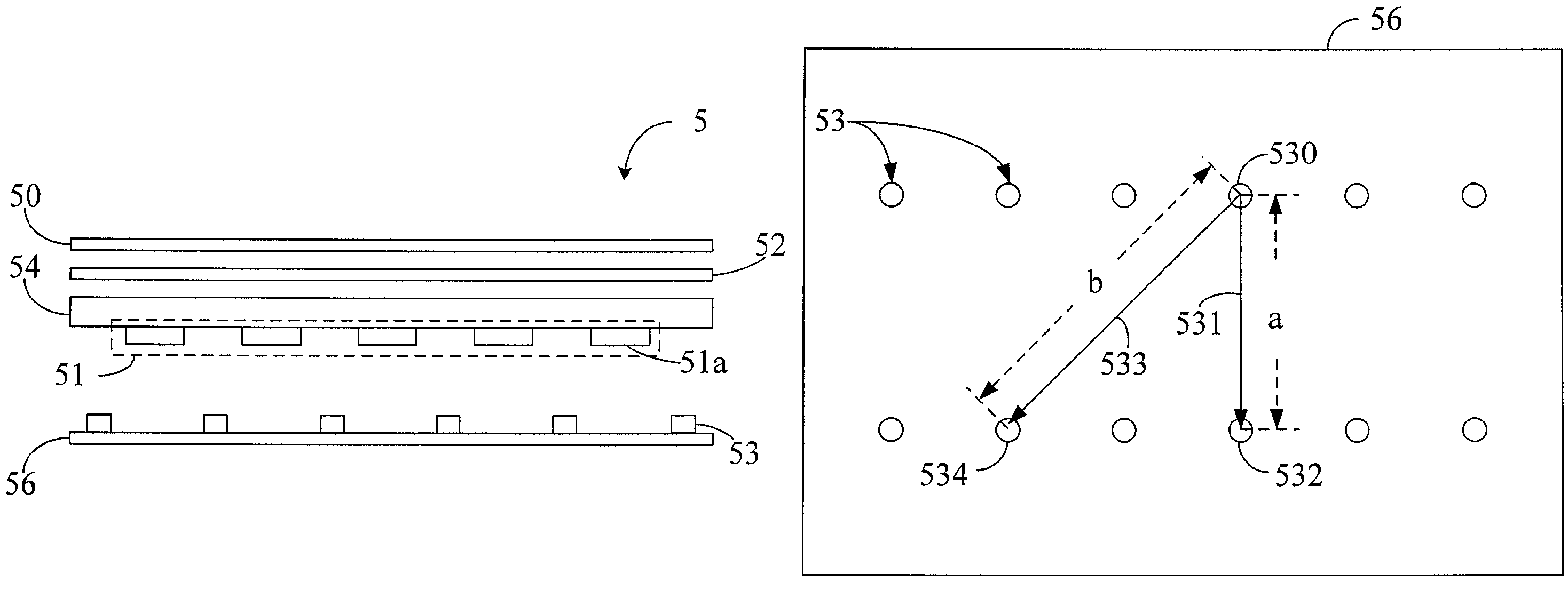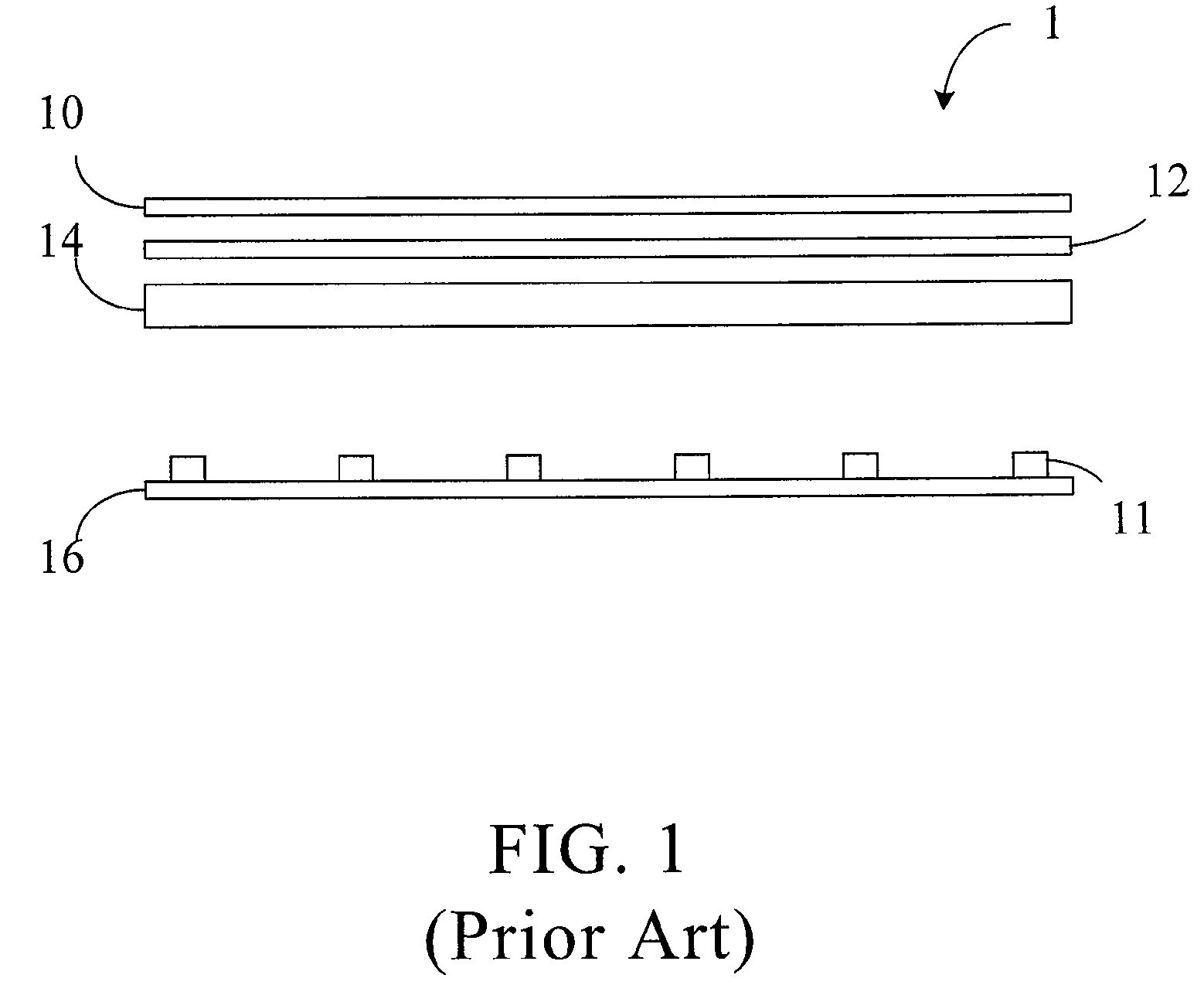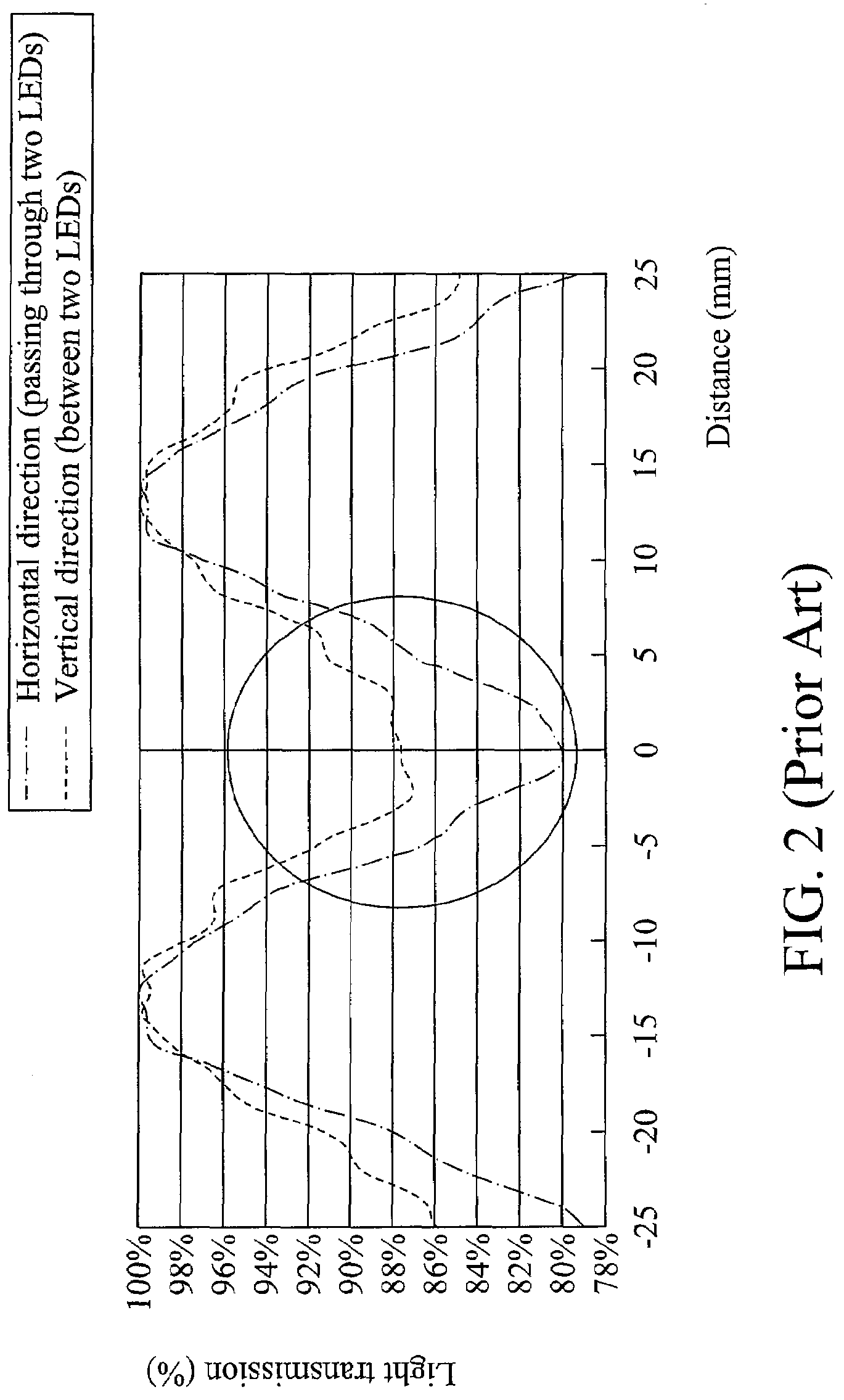Backlight module and scattering module for same
a backlight module and scattering technology, applied in lighting elements, lighting and heating apparatuses, instruments, etc., can solve the problem of a larger linear density along the horizontal or vertical axis than along the diagonal direction
- Summary
- Abstract
- Description
- Claims
- Application Information
AI Technical Summary
Benefits of technology
Problems solved by technology
Method used
Image
Examples
first embodiment
[0023]this invention is a backlight module 5, of which a cross-sectional view is depicted in FIG. 5. The backlight module 5 comprises a brightness enhancement film (BEF) 50, a diffuser sheet (DS) 52, a diffuser plate (DP) 54, a scattering module 51, a plurality of light sources 53 and a reflector 56 from top to bottom in FIG. 5. The scattering module 51 further comprises a plurality of scattering elements. In this embodiment, these scattering elements are a plurality of dot patterns 51a disposed on the bottom surface of the diffuser plate 54. The plurality of light sources 53 are light emitting diodes (LEDs) disposed on the reflector 56 facing towards the scattering elements. In other words, the plurality of light sources 53 are disposed on a side of the scattering module 51.
[0024]The top view of the reflector 56 and the light sources 53 in the backlight module 5 is depicted in FIG. 6. The plurality of light sources 53 include a first light source 530, a second light source 532 and ...
second embodiment
[0029]this invention is also a backlight module. The scattering module 51′ of this backlight module comprises scattering elements different from those in the previous embodiments. FIG. 9 depicts the bottom view of a diffusion plate 54 and the scattering elements 51a′ of this backlight module. As shown, the scattering elements 51a′ of the scattering module 51′ all have an equal area and a circular shape. The scattering elements includes a first dot pattern 510′, a second dot pattern 512′ and a third dot pattern 514′, which correspond to a first light source 530, a second light source 532 and a third light source 534 respectively. The line connecting the first dot pattern 510′ and the second dot pattern 512′ is parallel to a first direction 531, with two adjacent dot patterns along the first direction 531 with a first distance x, i.e., the first dot pattern 510′ and the second dot pattern 512′ has the first distance x. The line connecting the first dot pattern 510′ and the third dot p...
PUM
 Login to View More
Login to View More Abstract
Description
Claims
Application Information
 Login to View More
Login to View More - R&D
- Intellectual Property
- Life Sciences
- Materials
- Tech Scout
- Unparalleled Data Quality
- Higher Quality Content
- 60% Fewer Hallucinations
Browse by: Latest US Patents, China's latest patents, Technical Efficacy Thesaurus, Application Domain, Technology Topic, Popular Technical Reports.
© 2025 PatSnap. All rights reserved.Legal|Privacy policy|Modern Slavery Act Transparency Statement|Sitemap|About US| Contact US: help@patsnap.com



